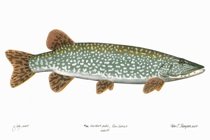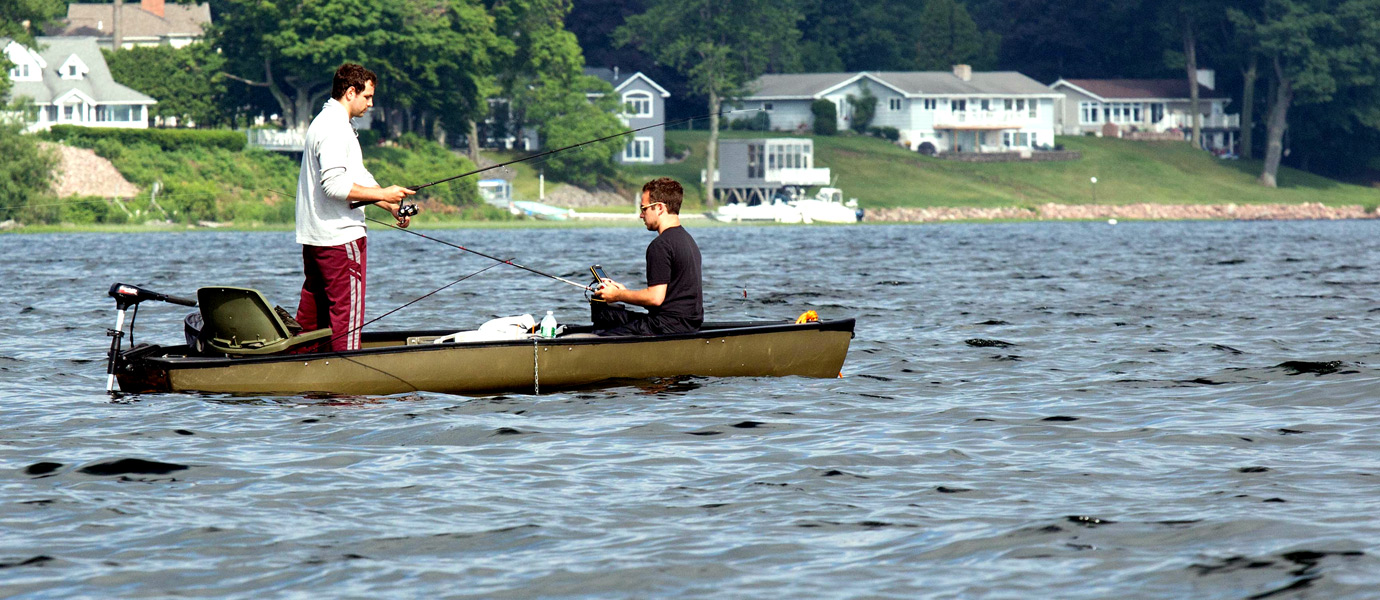Northern Pike

Northern pike are among the State's most important sportfish. They are relatively easy to catch, can grow to over 40 pounds, and put up a good fight when hooked.
Northern pike are very adaptable and occur in a wide range of habitats. They are one of the most widely distributed freshwater fish in the world, and the only members of the pike family to occur in arctic environments. Northerns prefer weedy portions of rivers, ponds, and lakes, but large adults will often move offshore into deeper waters. In New York State, they occur primarily in the St. Lawrence, Upper Hudson River, Lake Champlain, and Finger Lakes drainages.
Northern pike can be distinguished from their cousins, the pickerels, by the scaleless lower half of the gill covers. Their bodies are dark green to brown with light bean-shaped spots. There is no distinct dark bar beneath the eye. The undersurface of the lower jaw has eight to 12 pores and there are often bright gold markings on both sides of the head. Northerns can grow to be quite large - the current New York State record is a 46-pound two-ounce monster taken from Great Sacandaga Lake back in 1940.
Northern pike spawn in April or May, normally just after ice-out. Like other pike, they migrate into flooded marshes to deposit their adhesive eggs.
Northerns are delicious to eat. Their meat is white and flaky, and because of their large size, their bones are more easily removed than those of pickerels. Northerns can be taken through the ice as well as in open water, and provide an important winter fishery. Ice derbies are common sporting events for these prize fish in many parts of the State.
Due to their predatory nature, rapid growth, and large size, northern pike help control populations of smaller fish species. By feeding on small fish, they prevent over population and stunting. In some parts of Europe, northerns are raised for food.
More information can be found at the New York State Department of Environmental Conservation website.
